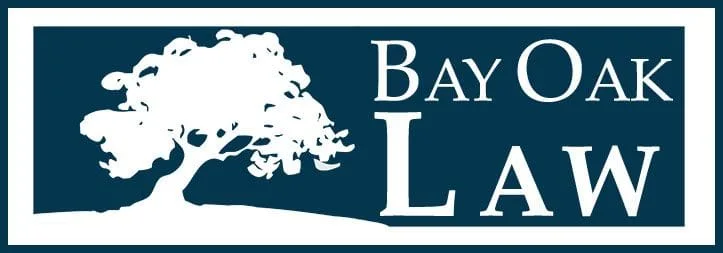- posted: May 13, 2014
- Archive
By: Daniel Richardson
[caption id="attachment_1569" align="aligncenter" width="185"] 3D Penrose Triangle Model http://commons.wikimedia.org[/caption]
3D Penrose Triangle Model http://commons.wikimedia.org[/caption]
The Economist magazine has called 3D printing the “Third Industrial Revolution.” But, what is it and what do you need to know to protect your intellectual property rights and avoid infringing the rights of others?
Although 3D printing has been around since the early 1980s, recent improvements and price decreases of 3D printing technology has made it available to an increasing number of businesses and consumers. Advances in the technology have allowed designers to 3D print designs virtually impossible to make just a few years ago, from an assortment of materials ranging from plastic to living cells. The price barrier to 3D printing has finally lowered to a point where regular consumers have begun entering the marketplace and companies such as Stratasys and 3D Systems have begun making relatively inexpensive lines of 3D “desktop” printers targeted at consumers. 3D printing, much like the PC in the early 1980s, is poised to make the leap from the domain of big businesses, researchers, and hobbyists to everyday consumers and small businesses.
3D printing’s impact on intellectual property is just being realized but it will have the same profound effect that digital media had on intellectual property in the late 1990s. Just as MP3s, video files, e-books, and other digital media created an upheaval in the media industry, the increased ability to replicate physical objects and designs using 3D printers is likely to have a significant impact on intellectual property rights.
The Technology
3D printing is an additive process building physical objects layer by layer. 3D printers can make objects out of a wide variety of materials including plastics, metals, edible products, and even actual living cells. 3D printers use computer aided design (CAD) files as the blue print to create the 3D objects. These designs can be created in a number of ways. 3D designs may be made from scratch using widely available 3D modeling software. Designs can also be downloaded from open-source free websites such as Thingiverse and pay per download sites such as the Makerbot® Digital Store and the soon to be launched Fabulonia. 3D printing designs can also be made by scanning and existing object using a 3D Scanner. In fact, in the not too distant future, anyone will be able to use his or her smartphone to scan an existing object and create a 3D CAD file of that object. For those who choose not to buy or cannot afford a 3D printer, customers can have their 3D CAD files printed by a number of businesses like Shapeways, the UPS Store, and Staples.
Printing layer by layer, 3D printers can make shapes that could not be manufactured before in one solid piece. As the technology becomes cheaper and more sophisticated, consumers and businesses alike will feel the impact of 3D printers. For instance, 3D printing will bring about truly personalized manufacturing. Have different sized feet? Shoes can be printed that conform to the unique contours of your feet. Companies like Organovo, a company specializing in building 3D printing using living cells, even promise to eventually print fully functioning organs.
3D printing will also have far reaching impacts on business beyond the mere ability to print objects by changing the way supply chains operate. Businesses will not need to carry large amounts of inventory especially as affordable 3D printers can quickly produce sophisticated designs.
IP Implications
Just as IP law was ill-prepared for the digital media revolution in the late 1990s, current laws, like the Digital Millennium Copyright Act (DMCA), do not adequately address the challenges 3D printing will present. Although lawsuits based on intellectual property infringement using 3D printers are still rare, the first shots of the upcoming 3D printing intellectual property war have already been fired.
- A 3D printed Penrose Triangle was created by Netherlands-based designer Ulrich Schwantz. A Penrose Triangle is an impossible two-dimensional image that appears to be three dimensional (for an example, see this video. Schwanitz offered the design on the website Shapeways.com for $70. Another creator saw Schwanitz’s design on YouTube, figured out how to reproduce it on a 3D printer, and offered the CAD file for free on Thingiverse.com – several media outlets also gave him credit as the original author. When Schwanitz found out about the CAD file on Thingiverse, he sent Thingiverse a DMCA takedown notice for online copyright infringement, but rescinded it after receiving criticism. It is unclear whether the DMCA notice was based on the actual CAD file, the image, or the structure itself.
- Fernando Sosa designed an iPhone dock based on the throne in HBO’s Game of Thrones. Sosa received a cease-and-desist letter from HBO telling him that he did not have a license to use the throne and could not sell the 3D printed throne on his website. The item has been removed from the website, but a remarkably similar looking iPhone dock in “blue Meth” along with a plastic Jessie Pinkman and Walter White is now available on his site.
Below are some of the ways that the various types of intellectual property may be affected by 3D printing.
Patents
Patents give the holder of the patent the right to make, use, and sell a new invention for twenty years. The patent itself must explain exactly how to make and use the idea. The purpose of the patent is to encourage the design of “new, useful, and nonobvious advances in technology” in exchange for the exclusive right to the invention for a limited period of time. Having a patent allows the holder to take legal action against the holder for damages including lost profits and royalties. A person is liable for patent infringement if he or she makes, uses, offers to sell, or sells any patented invention.
In many cases, it will be easier with 3D printers to take a patent and use the instructions to reproduce the invention. Individual instances will not likely have a great financial impact on the inventor, but, just like copying a song, these individual infringements, taken in aggregate can have serious financial consequences for the patent holder. Sharing of CAD files of patented designs or selling them on sites like Thingiverse has the potential to result in widespread patent infringement.
So, what does a creator do if he or she discovers that their patent is being infringed? A cease and desist letter would likely provide the best and most cost effective solution. Websites making the infringing design available, such as Thingiverse, will likely comply with the letter. Certain websites, such as Shapeways.com, have implemented “notice take down” procedures. Even if the website had not directly infringed the patent, not adhering to the “take down notice” could open the website up to liability for indirect infringement.
It should be noted that these websites would not be liable for direct infringement if they were simply acting as a passive host for the design files.
Acting against the infringers who upload or download CAD files of patented design files to the websites will likely be more complicated since determining individual identities is often difficult in the anonymous online world. If the infringing party’s identity can be determined, the best course of action here will also probably be sending a cease and desist letter. Few if any infringers would risk the possibility of litigation. However, it should be noted that litigation to enforce a patent can be costly and infringing parties are often likely to be “judgment-proof.” But, in certain circumstances, it may be advantageous for patent holders to pursue their legal remedies against infringes to discourage future infringement by other parties.
Copyright
Copyright protects “original works of authorship fixed in any tangible medium.” Examples of copyright include musical and dramatic works, literary works, paintings and sculptures, sound recordings, motion pictures and architectural works. Although a copyright can be registered with the U.S. Copyright Office (and, very often should be to establish priority, ownership, and for collecting damages), a copyright is created as soon as the original work is created. A copyright infringer can be liable for actual damages to the copyright holder as well as for profits arising from the infringement.
Copyright law faced significant challenges with digital media in the late 1990’s and early 2000’s. As a result, new laws, such as the Digital Millennium Century Act, were passed to adapt copyright law to the new technology. New scanning and 3D printing technology are making it almost as easy to replicate an original tangible object, as it is to copy an MP3. In the very near future, 3D Printing technology will allow someone to scan a copyrighted object, for instance, a Mickey Mouse figure at the Disney Store, and reproduce an exact replica. 3D printing also presents the problem of “format shifting.” If a physical object protected by copyright is scanned into a CAD file for 3D printing and distributed, are the distributed CAD file copies of the original object since they are a digital representation of the object and can be recreated on a 3D printer?
In the immediate future, the damage to copyright holders using 3D printers is minimal due to the expense of advanced 3D printers and the relative sophistication necessary to use them. However, as the technology improves, sharing CAD files could create more larger scale copyright infringement. For instance, if Lego began selling CAD files of its construction kits instead of in stores, in the same way we now usually buy digital music online rather than on a compact disc, the implications could be far reaching if, for example, parents began sharing these CAD files. Already, a Carnegie Melon professor, Golan Melvin, has designed unique Lego pieces and prints the pieces on a $1,100 MakerBot 3D Printer. The designs for these pieces are available online and anyone with an inexpensive consumer 3D Printer can download these designs and print them.
At some point, Congress will address 3D printing’s impact on intellectual property, possibly by passing laws prohibiting 3D scanning of copyrighted objects. New legislation covering 3D printing IP may be similar to the takedown notice under the DMCA given HBO’s reaction to the ‘Game of Thrones’ phone dock. Companies could protect their IP by using digital rights management software that prevents CAD files from being copied or only allows them to work on certain machines. In the meantime, it is important for users of 3D printing technology to be aware of the potential for copyright infringement.
Trademark
The purpose of trademark and trade dress is to identify the source of a product or service. Trademark may include “any word, name, symbol, or device, or any combination thereof” so long as it identifies the source and is non-functional. For instance, the word “Apple” and the Coke bottle would both be examples of trademarks. Businesses jealously defend their trademarks to assure their customers can be guaranteed that a certain product is from them.
3D printing makes it possible to create objects with the trademarks of others. For example, you could 3D print a new case for your Samsung phone with an “Apple” logo. Trademark holders can be hurt if trademarks on infringing products have the propensity to confuse the consumers as to the origin of the product. Trademarks can also be damaged by diminishing the “prestige” of the mark by making appear to be less rare. As 3D printers becomes less expensive and more sophisticated, it will become important for users to be avoid inadvertently infringing existing trademarks.
3D printing technology will inevitably make it harder for companies to police their intellectual property. IP law will eventually catch up with 3D printing just as it has with other technological advances like digital media. Exactly how it will end up is uncertain. It is important for both creators and users to be aware of possible infringement using 3D printers to avoid adverse legal consequences.
ADVERTISING MATERIAL. The purpose of this article is to provide information on legal developments that may affect your business and is not to be considered advice nor does reading this content create an attorney-client relationship.



